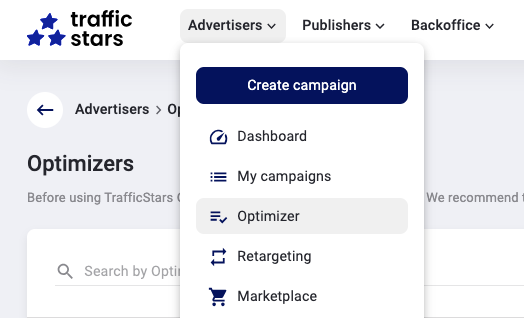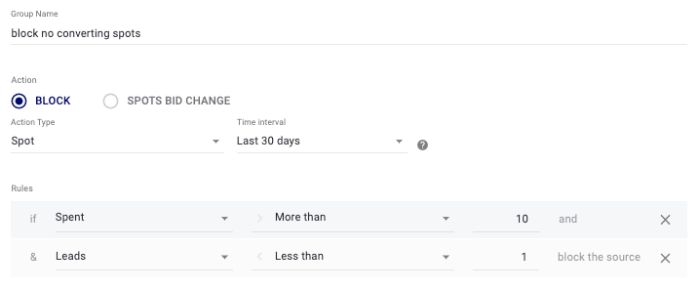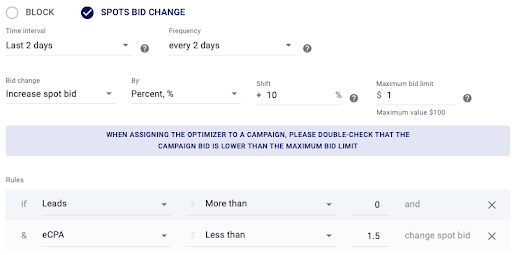Conversion tracking is an essential tool for advertisers to help them optimize their advertising campaigns. With conversion data, you can easily understand which traffic sources are bringing them the most leads. As a result, media buyers can significantly increase the profitability of their advertising campaigns. In this article, you’ll learn what a postback and tracking pixel are, and why you should add Optimizer to your media buying arsenal. Let’s roll!
What is a Tracking Pixel?
Pixel tracking and postback tracking are two distinct methods employed in digital marketing to track conversions and gather essential data. Pixel tracking involves placing a small piece of code, known as a tracking pixel, on the advertiser's website.
A tracking pixel is an HTML code snippet that can be embedded on a landing page.
When a user completes a specific action, such as purchasing or signing up for a newsletter, the tracking pixel sends a request to the analytics platform, recording the conversion. This method is often used by product owners and allows for easy implementation, but it may be limited by browser settings, leading to potential discrepancies in data accuracy.
For example, online retailers can use a tracking pixel to monitor various aspects such as conversions, total sales, the total cost, and also keep tabs on users who added products to their shopping carts but did not finalize their purchases.
Pros:
Easy Implementation: Placing a tracking pixel on a website is relatively simple and does not require extensive technical knowledge.
Cross-Device Tracking: Pixel tracking can provide insights into user behavior across different devices, allowing a more comprehensive understanding of the customer journey.
Multi-Channel Tracking: This method can track conversions from various traffic sources, not limited to just affiliate marketing efforts.
Cons:
Ad Blockers: Some users employ ad blockers that can prevent tracking pixels from firing, leading to data discrepancies and incomplete tracking.
Cookie Dependence: Pixel tracking often relies on cookies, which can be deleted or blocked by users, affecting the accuracy of tracking data.
Data Latency: The data captured by tracking pixels may not be real-time, leading to potential delays in conversion reporting.
Limited Attribution: Pixel tracking may struggle to attribute conversions accurately in cases of multiple touchpoints along the customer journey.
TrafficStars Tracking Pixel
If you’re a website owner and want to track conversions through TrafficStars, then feel free to install our tracking pixel. Installing the pixel code is an easy process that only takes 2 steps. First, go to the “Media buying tools” tab and copy the code. Further, paste the code to the relevant page of your website.
![]()
What is a Postback?
On the other hand, S2S postback tracking is a more direct and reliable approach used in affiliate marketing. When a conversion occurs, the advertiser's website sends a postback URL to the affiliate network, instantly notifying them of the successful transaction.
Postback tracking tracks online conversions by sending data from an affiliate network to an advertiser's server after a designated action.
Postback tracking in affiliate marketing usually involves three key players: the Advertiser (Ad Network), the Affiliate Network, and a tracking service. The integration can also be set directly between an Ad network and an Affiliate Partner.
![]()
This communication between platforms allows for accurate and real-time conversion tracking, enabling advertisers to accurately measure their affiliate campaigns' effectiveness. When a user clicks on an affiliate link and completes the desired action on the advertiser's website, the affiliate network triggers a postback to record the conversion and credit the appropriate affiliate with the commission for driving that conversion.
Pros:
Real-Time Tracking: Postback tracking offers instant notifications to the affiliate network when a conversion occurs, providing up-to-date and accurate data.
Reliable Attribution: With direct communication between the advertiser's website and the affiliate network, postback tracking ensures precise attribution of conversions to the respective affiliates.
Enhanced Security: Postback tracking can be more secure since it doesn't rely on cookies or third-party data, reducing the risk of data manipulation or fraud.
Data Accuracy: Postback tracking involves direct server-to-server communication, so it is less susceptible to discrepancies caused by browser settings or ad blockers.
Cons:
Technical Complexity: Postback tracking may require more technical expertise than pixel tracking.
Compatibility Challenges: Ensuring compatibility between different platforms and systems can be challenging and require additional integration efforts.
TrafficStars Postback
Go to our platform's Media Buying Tools section to create a unique postback URL, which you can add to your affiliate network or tracker.
![]()
Check out this guide, “How to set up tracking conversions” to learn more about postback tracking settings.
Postback parameters vs. Tokens
Do not confuse postback parameters with tokens (macros) in a campaign link. These parameters play different roles. Tokens in the referral link transmit data from TrafficStars to the affiliate network or the tracker, while postback is needed to receive the data from the third party. You can find TrafficStars tokens while creating a campaign and in this article.
![]()
Tracking Tools
Tracking tools are crucial and invaluable in affiliate marketing, acting as the foundation for successful campaigns. They offer advertisers, affiliates, and affiliate networks precise and real-time data on essential performance metrics, including conversions, clicks, and impressions. This data empowers advertisers to assess the effectiveness of their marketing strategies and make data-driven decisions to enhance campaign performance.
TrafficStarts integrated with the most popular trackers:
- AdsBridge
- Voluum
- BeMob
- Binom
- RedTrack
- Keitaro
- Peerclick
- Thrivetracker
- LandingTrack
- AdsBridge
- CPV LAB Pro
🎁 Some trackers provide a welcome bonus. Look for them in our guides and on the platform in the section Media buying tools.
Conversion Tracking & Optimization
Once you have set up TrafficStars a tracking pixel or S2S postback, you can take full advantage of Optimizer. This is a powerful tool to enhance the performance of your campaigns.
By inputting conversion data, advertisers can define rules that automatically adjust bids or add underperforming sources to the blacklist.

For instance, if a particular ad spot fails to generate a single lead after spending a cost equivalent to two or more conversions, Optimizer will promptly blacklist that source to prevent wasteful spending.

On the other hand, if a spot demonstrates a low eCPA* by consistently delivering leads, Optimizer will automatically increase the bid by 10%, ensuring that successful sources receive more exposure to maximize returns.
*eCPA refers to the cost per lead. A lower effective cost per conversion indicates that you are generating leads at a more cost-effective rate.

This dynamic and data-driven approach empowers advertisers to fine-tune their strategies, make informed decisions, and achieve greater success in their advertising endeavors.
💡 Check out more ideas for optimization rules.
Summing Up
In summary, a tracking pixel is a viable option for small businesses selling their own products, since it’s a simple solution for tracking conversions. Postback URL tracking is a choice of affiliate marketers. It’s the most reliable and accurate method for tracking conversions. Postback tracking ensures that every conversion event is recorded, eliminating the possibility of data loss or inaccuracies.
Conversion tracking plays a pivotal role in optimizing campaigns. To further enhance marketing outcomes, an advanced tool like Optimizer is recommended. With its powerful features and data-driven insights, Optimizer empowers marketers to fine-tune their strategies, increase conversions, and boost their overall performance.
Additionally, TrafficStars has made it even more convenient for marketers by integrating with the most popular tracking platforms. This integration ensures seamless data flow and accessibility, enabling marketers to gain comprehensive insights and make informed decisions to drive their affiliate marketing campaigns to new heights.



